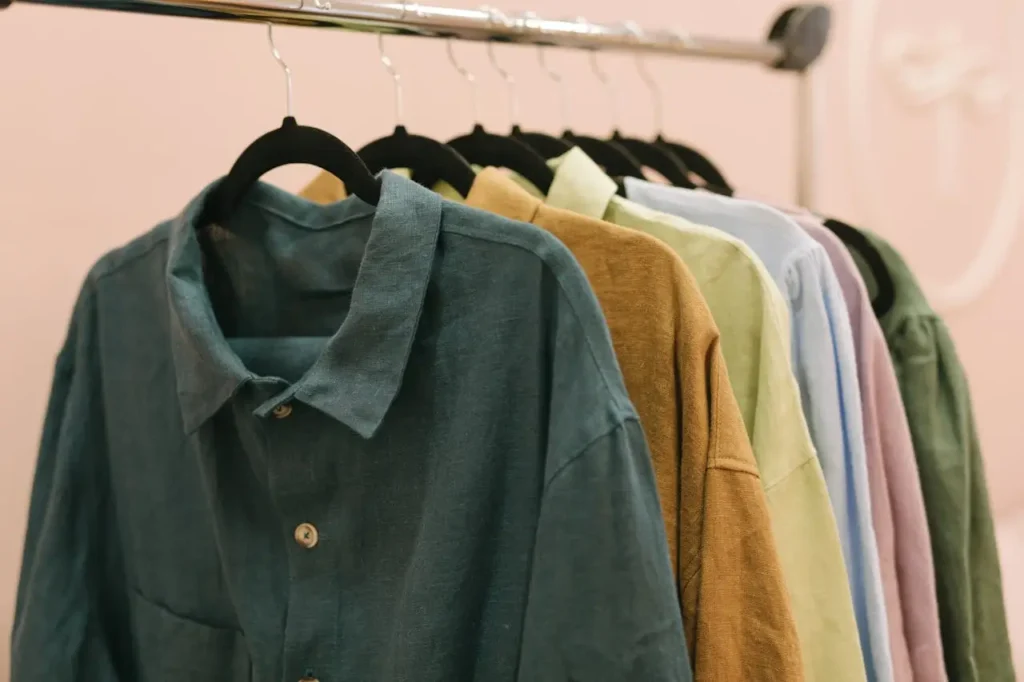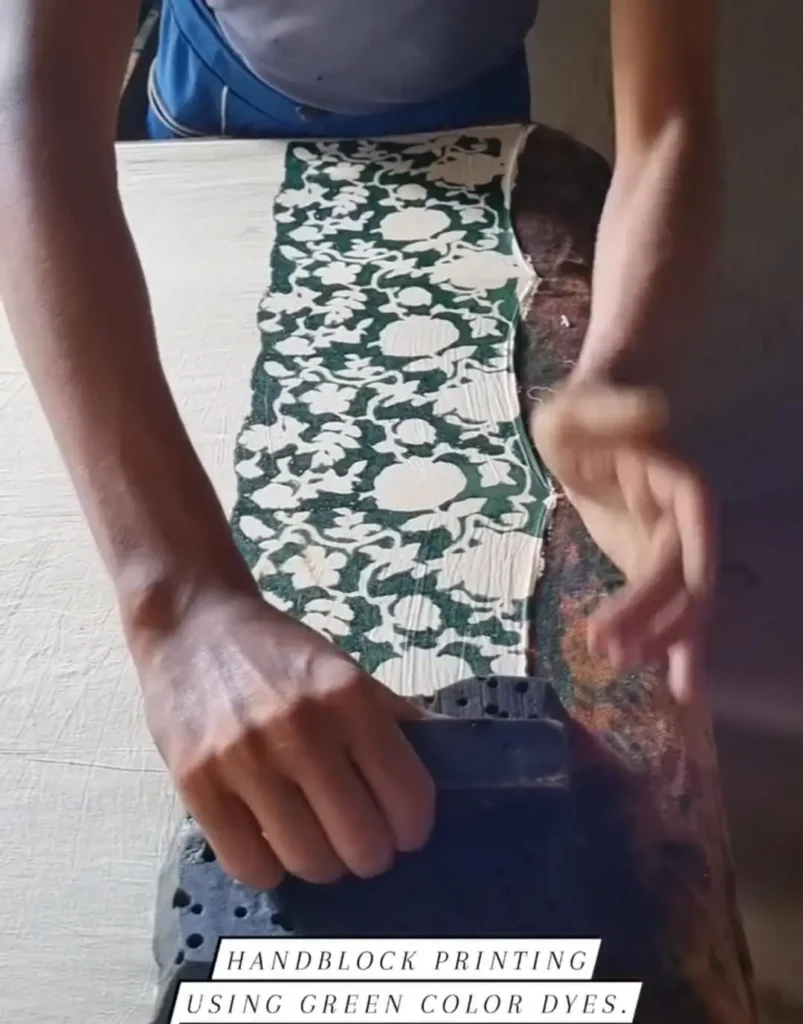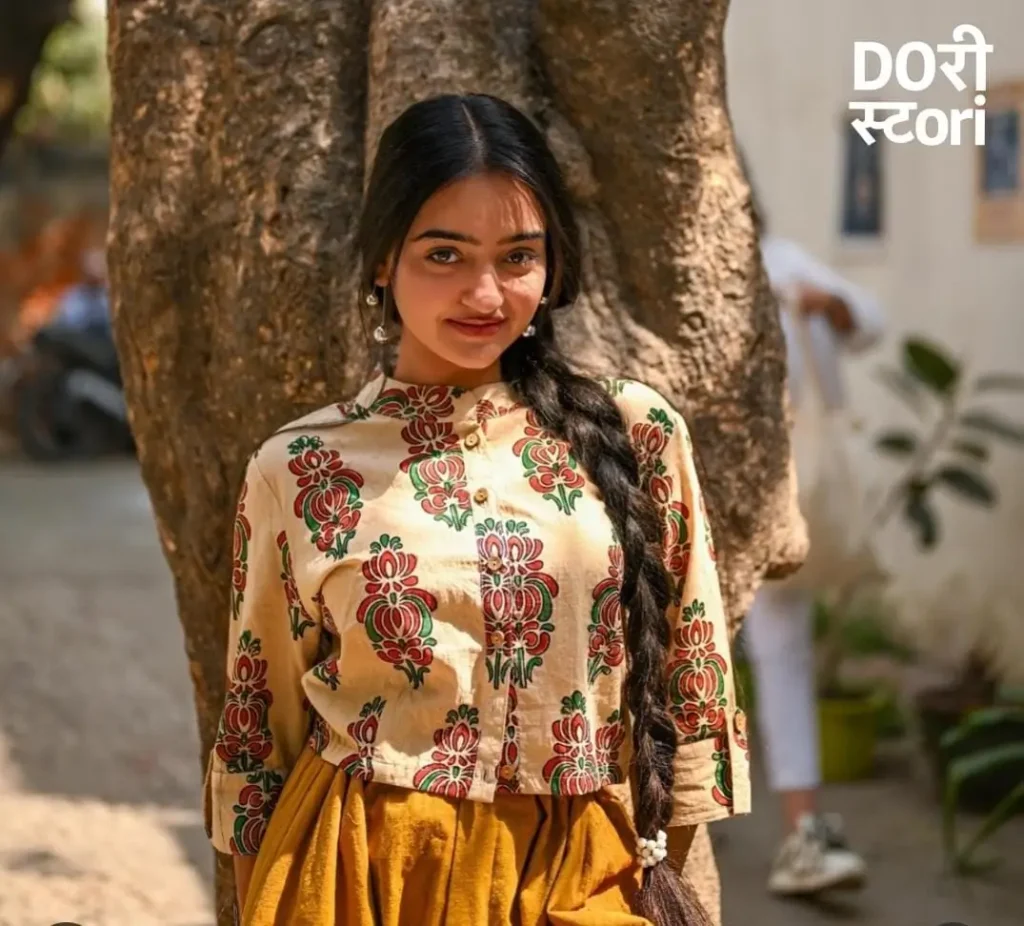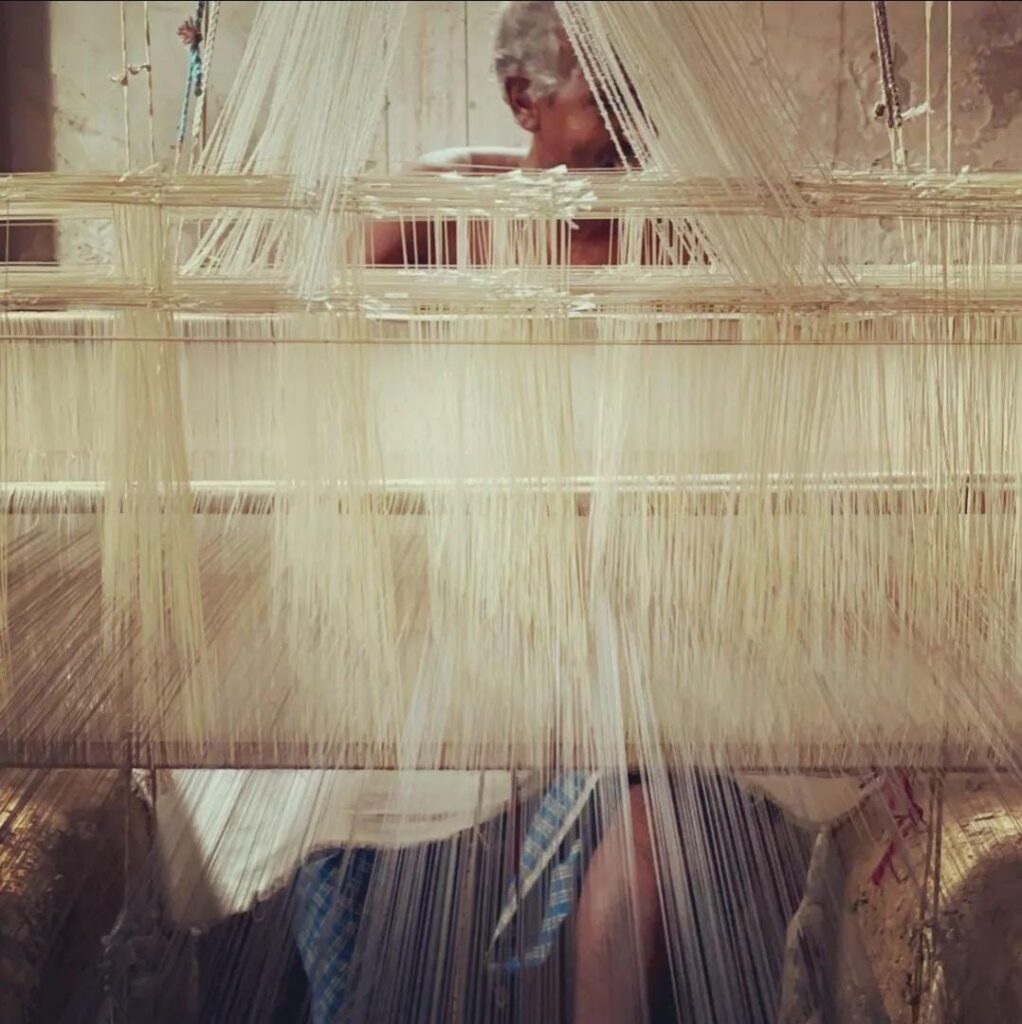Handwoven sarees are perfect for blending tradition with modern fashion. For formal events like weddings, consider pairing a traditional silk saree with contemporary accessories, such as statement earrings or a belt that cinches the waist to give the saree a modern silhouette. High-neck blouses or even cape-style tops can also be an interesting way to […]
Author: Shreembysrishti
Saree Weaving Traditions Across India
India’s saree weaving traditions are a testament to the country’s rich cultural diversity and craftsmanship. From the vibrant Kanchipuram silks of Tamil Nadu to the detailed Jamdani of Bengal, each region has developed its own unique saree styles and weaving techniques. These handwoven sarees are more than just garments; they are symbols of cultural heritage, […]
Kantha Embroidery: A Journey Through Tradition and Craftsmanship
Step One: Creating the Outline The creation of Kantha embroidery begins with outlining the design. Artisans use a traced pattern that is pierced and then transferred onto the fabric using a liquid mixture of graphite. This initial outline serves as the foundation for the embroidery, which is traditionally crafted by women. This gender-specific artisanal involvement […]
The History and Evolution of Dupattas: Tracing Its Cultural Significance
The dupatta, a versatile piece of fabric traditionally worn with Indian attire, has a rich history that reflects its cultural significance. Its origins can be traced back to the Indus Valley Civilization, where unstitched cloth was used for modesty and warmth. During the Vedic Period, the dupatta took the form of the “uttariya,” an essential […]
Phulkari Embroidery: History, Motifs and Patterns
Phulkari, meaning “flower work,” is a vibrant embroidery tradition from Punjab, India, characterized by its intricate designs and rich colors. This art form has deep roots in Punjabi culture, often reflecting themes from nature and rural life. Below, we explore some prominent motifs of Phulkari embroidery, each carrying its unique significance. 1. Mor Phulkari (Peacock […]
History and Evolution of Sarees: From Ancient Civilizations to Modern Fashion
The saree is a timeless garment that has adorned women in India and beyond for over 5,000 years. Originating from the Indus Valley Civilization, early sarees were unstitched drapes made from cotton. Over the centuries, the saree evolved significantly, particularly during the Vedic Period, where it transformed into structured forms like the “uttariya” and “antariya.” […]
Caring for Your Handcrafted Garments: Tips and Tricks
Handcrafted garments require special care to preserve their beauty and integrity. Whether it’s a hand-embroidered dress, a handwoven scarf, or naturally dyed fabric, proper maintenance can extend the life of these unique pieces. Here are some tips and tricks for caring for your handcrafted garments: Read the Care Label: Always follow the specific care instructions […]
The Revival of Traditional Handwork in Modern Fashion
The revival of traditional handwork in modern fashion marks a return to craftsmanship and heritage in an industry often dominated by fast-paced, mass-produced trends. This movement celebrates the artistry, skill, and cultural significance of handcrafted techniques, integrating them into contemporary fashion to create unique, sustainable, and meaningful garments. Reviving traditional handwork Benefits of Reviving Traditional […]
The Fusion of Traditional and Contemporary: Creating Unique Fashion Statements
The fusion of traditional and contemporary elements in fashion creates unique and innovative styles that resonate with diverse audiences. This approach combines the rich heritage of traditional craftsmanship with the cutting-edge trends of modern fashion, resulting in pieces that are both timeless and current.
Sustainable Fashion: Handcrafted Textiles for a Better Future
Sustainable fashion emphasizes eco-friendly practices throughout the entire lifecycle of clothing, from design and production to consumption and disposal. Handcrafted textiles play a crucial role in this movement by promoting traditional techniques, reducing waste, and supporting local economies.




